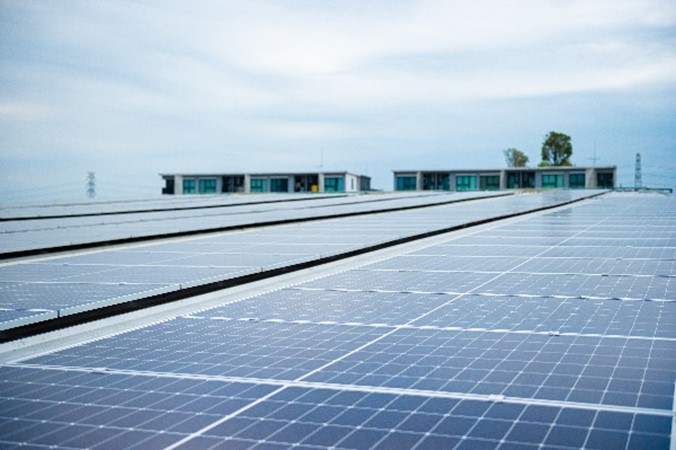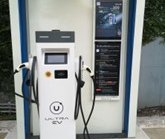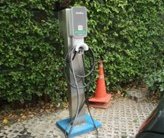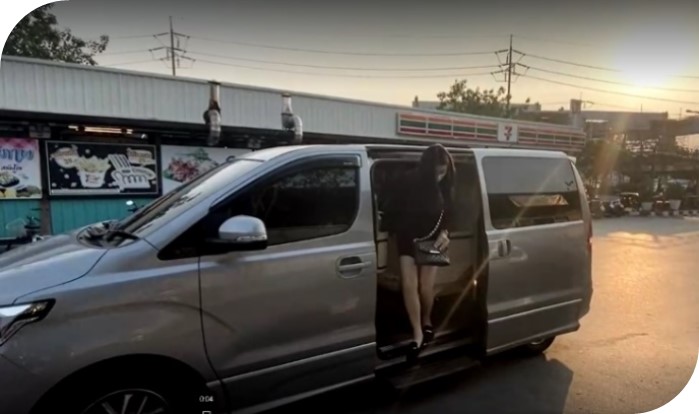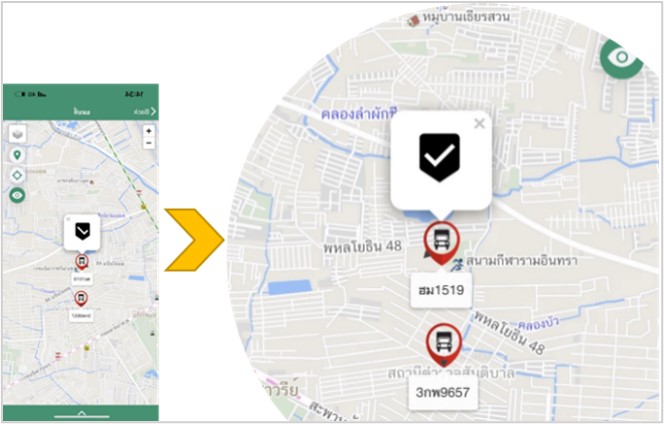Sustainability Management in The Environmental Aspect
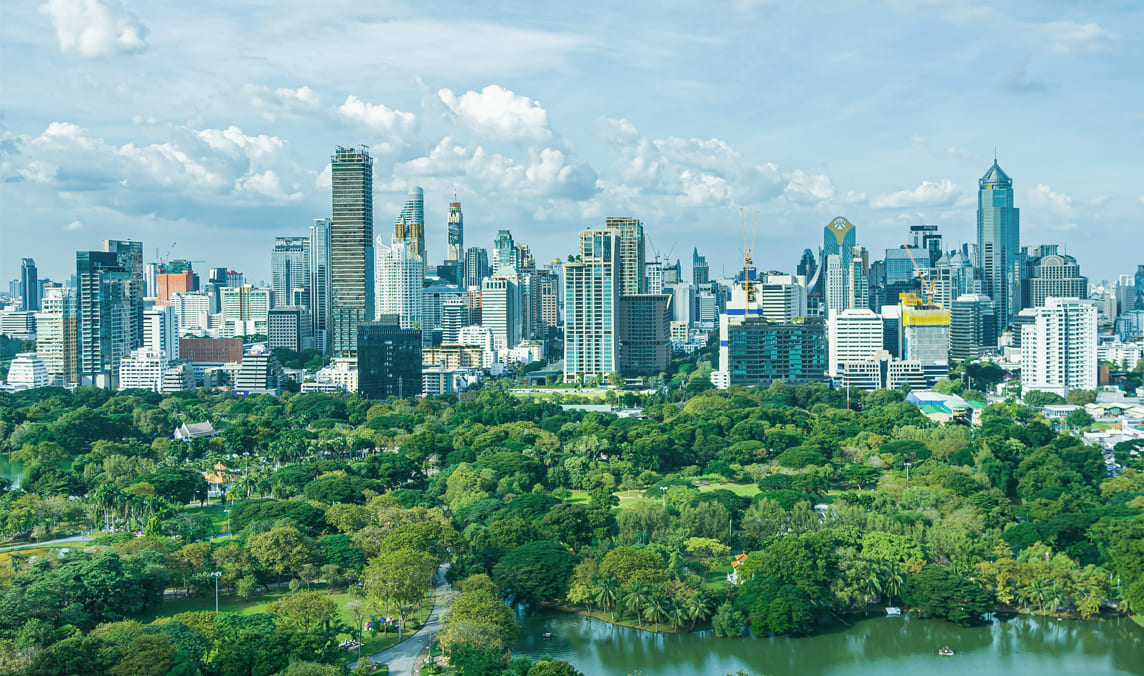
Environmental policy and practice
The company has established climate change targets that support the country's goals. These include reducing greenhouse gas emissions by 40% by 2030, achieving Carbon Neutrality by 2035, and Net Zero by 2055

The Company has established an environmental policy and guidelines through its Grow Green project in which the Company has resolved that
Environmental Governance within the Company
The Company has established a Business and Environmental Sustainability Department responsible for overseeing and implementing initiatives related to sustainability and environmental stewardship. This department reports directly to senior management, under the leadership of Mr. Wutthiwat Wipanpong, Deputy Chief Executive Officer for Business and Sustainability.
Roles and Responsibilities in Sustainability and Environmental Governance
- Implement the organization’s strategies, goals, and policies related to sustainability and the environment, including climate change initiatives and greenhouse gas (GHG) emissions reduction pathways, with the objective of achieving Net Zero emissions.
- Develop operational plans and internal systems in alignment with the company’s sustainability policy, environmental policy, and climate action framework.
- Ensure that all sustainability and environmental activities comply with applicable laws, regulatory requirements, and recognized national and international standards and best practices.
- Oversee environmental and sustainability-related risks by establishing risk management frameworks, conducting risk assessments, and developing risk mitigation plans—particularly those associated with environmental impacts, climate change, and GHG emissions—following the company’s enterprise risk management approach to support the Net Zero goal.
- Promote engagement and effective communication across directors, executives, employees, and stakeholders to ensure alignment with the company’s sustainability and environmental policies.
- Report operational approaches and performance outcomes to the Executive Committee and the Corporate Governance Committee.
The Grow Green adheres to the following
Environmental performance
During 2024, the Company has not committed any acts that violate or are against environmental laws or regulations while there were no financial expenses or fines arising from environmental offenses that damage natural resources, the environment, living things, and quality of life of the people.
| Targets | Units | Results |
|---|---|---|
| Total cost of environmental fines and penalties | Bath | 0 |
| Violation of environmental laws | Case | 0 |
Energy Management

Energy Management
The electricity consumption target in 2024 has been set to enhance the efficiency of electricity management in line with the Company's environmental policies and practices or GrowGreen.
| Target | Unit | Result |
|---|---|---|
| Reduce electricity usage within the organization by 5% (compared with 2024 base year) | MWh / Employee | Reduce 18.33 % |
Energy management within construction projects
Electrical power is needed during construction. The Company installed temporary power meters to monitor and provide sufficient electricity to be used during the construction period and ensured that the surrounding communities were not affected.
Environmental impact preventive and corrective measures
- Promote efficient energy consumption through PR campaigns within the projects
- Ensure electrical system surveillance by safety staffs during operation
Environmental impact assessment measures
- Maintain electrical wires and appliances in good working condition and repair immediately throughout the construction period
Energy management within Projects
Electrical system installment
The Company conducted installations of electrical systems for projects in the normal electrical systems are to supply electricity to the condominium units and common areas of the projects while the Light Emitting Dode (LED) bulbs are used in the light systems to save electricity within the projects. In this regard, inspections of the operation of the electrical systems are arranged on a monthly basis including the maintenance of the electrical systems and electrical equipment in the projects. In case that any damage is found, corrective actions will be taken immediately.


Energy preservation
Energy conservation within the project - the Company has designed the buildings in accordance with the requirements of the Ministerial Regulation Prescribing Type or Size of Building and Standard, Criteria and Procedure in Designing Building for Energy Conservation B.E. 2563 (2020) and in accordance with the Notification of the Ministry of Energy on Determination of Building Design Standards for Energy Conservation B.E. 2564 (2021) as follows:
- Overall Transfer Value (OTTV) which must meet the criteria for considering the overall energy use of the building according to the Ministerial Regulation Prescribing Type or Size of Building and Standard, Criteria and Procedure in Designing Building for Energy Conservation B.E. 2563 (2020).
- Roof Thermal Transfer Value (RTTV) from the calculation of the total heat transfer value of the building roof.
- Use of electrical lighting within buildings of usable area per building.
- Total energy value considering the design of the building, the overall energy use of the building. The total energy value of each building is lower than the total energy value of the reference building.
Note that the projects have specified energy conservation measures within each project which can be classified into 2 parts as follows:
- The project design to be in accordance with the Ministerial Regulation Prescribing Type or Size of Building and Standard, Criteria and Procedure in Designing Building for Energy Conservation B.E. 2563 (2020) and in accordance with the Notification of the Ministry of Energy on Determination of Building Design Standards for Energy Conservation B.E. 2564 (2021).
-
The project design to take into account energy saving such as
- Setting of proper positions of the light bulbs without having a larger number than necessary but not so too less with inadequate lighting.
- Installations of energy-saving Light Emitting Diode (LED) bulbs to save energy and reduce the expense burdens on residents.
- Setting of a timer for elevator doors to close automatically after 10 seconds which will reduce the need to use electrical energy to drive the motor to open and close the door.
- Public relations for residents in the project to clean air conditioners regularly along with offering contact numbers of technicians to repair/clean air conditioners to accommodate residents within the project.
- Public relations for residents in the project to set the air conditioning temperature appropriately, approximately 25 - 26 degrees of Celsius.
- Arrange staff to clean lights and lamps at least every 6 months.
The Company developed an electrical energy conservation manual to distribute to every residential unit to encourage residents to follow energy conservation measures and put up PR boards to ensure compliance with the energy conservation manual.
Furthermore, energy-efficiency certification, maintenance of electrical systems, air ventilation in common areas, and machines are regularly arranged.
Solar rooftop installation to promote the use of clean energy
Mingle Mall Kave TU 724 square meters of solar rooftop
generating approximately
In addition, lighting powered by solar cells has been installed in the walkways and gardens of the common areas of the project, substituting the use of electrical energy. The reason is that solar cells have a longer lifespan than electric bulbs and can help reduce electricity costs and costs of installing various electrical wiring systems including maintenance of electrical wires Besides, the system offers more convenience as it can be turned on and off automatically which helps reduce the risk of accidents from electrical short circuits or other dangers caused by electricity use.
Energy management at the headquarters
Reduction of electrical energy consumption
Energy-saving campaigns at the headquarter include internal communications to promote eco-conscience for its employees, control of lighting and air-conditioning based on timing and necessity in certain areas, LED bulbs replacement throughout the offices, installation and maintenance of electrical systems to ensure its maximum energy-saving efficiency.
In addition, 153.9 square meters of solar rooftop systems were installed, generating approximately 32 kilowatts of solar energy to be used at the headquarters instead of the usual energy consumption.
Electricity Energy Management Consumption
| Electricity Energy | Units | 2022 | 2023 | 2024 |
|---|---|---|---|---|
| Electricity Energy usage | ||||
| Electrical energy at the headquarters | MWh | 495,608 | 624,467 | 634,528 |
| Electricity usage rate per unit area | MWh / Square meters | 104.49 | 131.66 | 133.78 |
| Renewable Energy usage | ||||
| Renewable energy usage within the organization (Solar energy) | MWh | 152,900 | 198,100 | 207,400 |
| Electricity Costs | ||||
| Electricity Cost | Bath | 2,105,276.81 | 2,935,003.87 | 2,841,122.51 |
Fuel Consumption
Electric Vehicle Charger (EV Station) Installation
The Company has installed electric vehicle chargers (EV Stations) for the convenience of electric vehicle users residing in the Company's projects to promote the use of clean electricity to replace fuel consumption which is the cause of environmental problems. The Company aims to install electric vehicle chargers (EV Stations) in all of the Company's projects starting from 2023 onwards.
The Company has joined forces with the Metropolitan Electricity Authority (MEA) to install the intelligent innovation PLUG ME EV to embrace the electric vehicle trend and improve the living standards of residents. The pilot project is the "Atmoz Oasis Onnut" project, highlighting convenience and reduced costs. Up to 12 parking spaces offer EV stations.
In addition, the Company installed EV stations at the head office to offer more convenience for employees with electric cars and promote the use of clean and environmentally-friendly energy. EV stations were installed at 2 locations for employees and they can use the electric charging through an application that can be downloaded on both Google Play and the App Store.
Location 1
"EV Station" application can be connected while the electric charging fees will be displayed on the application screen.
Location 2
Juice box EV charger can be connected to the “One Charge” application without any electric charging fees.
Carpool: Same Way, Same Car
The GrowGreen policy is based on the environmental principle of AssetWise that we adhere to as a practical guideline in every aspect of the Company. Carpool was launched as an initiative for car sharing to reduce overall energy use. In addition, it is offered as a benefit for employees to cut down their travel expenses as the head office is located in an alley, employees can use the shuttle service provided by the Company in the morning for employees who use public transportation. Moreover, a GPS tracking application is used to track the shuttle bus to accommodate employees by informing real-time locations of the shuttle bus.
This initiative has been in operation since 2021 and has set targets to reduce overall energy consumption, gasoline and greenhouse gas emissions. The target is to reduce the overall use of gasoline by 100 liter per year. In 2024, there was only 1 service route, which is from the PTT gas station before Soi Phahon Yothin 48 (Soi Sai Yut) to the destination of AssetWise office (round-trip distance of 4.9 km)
The total distance traveled by the shuttle was 5,350.8 km using a total of 486.43 liters of gasoline, equivalent to greenhouse gas emissions rate of 11,971.20 kg.CO2e
Gasoline for carpool passengers in the case of not using the carpool totaled 5,350.8 km or a total of 486.43 liters of gasoline would be used (calculated in the case of taking a taxi). Greenhouse gas emissions rate is 11,971.20 kg.CO2e
Fuel consumption
Gasoline and Fuel Consumption
| Gasoline and Fuel usage | Units | 2022 | 2023 | 2024 |
|---|---|---|---|---|
| Diesel | Liter | 46,196.73 | 49,041.11 | 52,173.17 |
| Gasoline | Liter | 10,826.34 | 11,472.60 | 11,719.85 |
| Gasoline and Fuel Cost | Bath | 1,458,969 | 1,440,253 | 1,515,400 |
Energy Management Consumption
| Energy usage | Units | 2022 | 2023 | 2024 |
|---|---|---|---|---|
| Total energy usage within the organization | MWh | 648,508 | 819,567 | 841,928 |
| Renewable Energy | MWh | 152,900 | 198,100 | 207,400 |
| Solar Energy | MWh | 152,900 | 198,100 | 207,400 |
| Non-Renewable Energy | MWh | 495,608 | 624,467 | 634,528 |
| Purchased Electricity Energy | MWh | 495,608 | 624,467 | 634,528 |
| Purchased steam or fuel | MWh | 0 | 0 | 0 |
| Non-Renewable Energy for sale | MWh | 0 | 0 | 0 |
| Traded electricity | MWh | 0 | 0 | 0 |
| Traded steam or fuel | MWh | 0 | 0 | 0 |
| Energy usage per area | MWh / Square meters | 104.49 | 131.66 | 133.78 |
Water management

AssetWise is committed to cutting water usage within the organization by setting a target or water usage reduction by 2024 as well as a long-term target to reduce water usage by 2028 to attain efficient water management, cost-effective use of water and maximum benefit generation to mitigate the risk of water shortages, including the discharge of untreated wastewater from the construction process into water sources, which may cause legal disputes.
| Target | Unit | Result |
|---|---|---|
| Reduce water consumption within the organization by 5% (compared with 2024 base year) and reduce 30% in 2028 (compared with 2024 base year) | Liters / Employee | Reduce 6.17 % |
Water management within Construction Projects
During the construction of a project, risks and problems may arise from water use and water management. Therefore, the Company has collaborated with contractors, who are considered important stakeholders during the construction of the project, to assess the risks and determine guidelines and measures to prevent, solve and alleviate problems that may happen from water use and water management.
During the construction of the Company's projects, no projects were found to have high risks or significant problems related to water use or water management.
The Company must treat wastewater from construction projects according to the BOD standard before releasing it outside of the project area and puts preventive measures in place should a hazard occur
Measures to prevent or mitigate environmental impact
- Wastewater treatment system designed to be able to treat sufficient amounts of wastewater generated during the project is in place. The system treats wastewater according to BOD standards before releasing it outside of the project area
- Staffs assigned to maintain the wastewater treatment system in its best condition
- Coordinate with private sewage pumping trucks to pump out excess sediment once a month throughout the construction period.
Measures to evaluate environmental impact
- Samples from each wastewater treatment system, taken both before and after the construction project, are regularly tested
- Structure of wastewater pipes of the wastewater treatment system is examined.
- Check for water leaks from bathrooms on a daily basis throughout the construction period.
Water is used during the construction project in 2 ways: 1) water consumed by construction workers and 2) water used for construction work. The Company must put measures in place to prevent any water impact to its surrounding communities
Measures to prevent or mitigate environmental impact
- Arrange a water reserve for consumption to be able to store water for at least 1 day of use
- Promote efficient water usage amongst workers
- Once the project is completed, the unused water in the tank will be used in watering plants, washing debris off the streets, etc.
Measures to evaluate environmental impact
- Test pipes and valves for leakage for immediate maintenance
- Test water tanks for signs of breakage and erosion for immediate maintenance
- Arrange water tank maintenance and cleaning throughout the project period
Wastewater from workers during the construction projects are treated according to the BOD standards before being released outside of the project areas. The company must put measures to prevent any environmental impact
Measures to prevent or mitigate environmental impact
- Restrooms are regularly cleaned and maintained throughout the project period
- Restrooms are tested for leakage
- Once the project is completed, the installed wastewater treatment system must be removed by pumping out debris and cleaning the tanks multiple times.
Measures to evaluate environmental impact
- Conform to the measures to test water quality to evaluate environmental impact.
Water management within projects
The Group manages water for all projects with an emphasis on treating wastewater generated from water use within each project, which must be maintained to have a BOD value as required by law before being released outside the project. In each project, a wastewater treatment system provided to treat wastewater from the use within the project must be adequate for the amount of wastewater generated. In this regard, skilled personnel have been arranged to maintain and control the project's wastewater treatment system to ensure continuous and efficient operations. Furthermore, maintenance plan must be in place with an arrangement for the pumping of sewage and grease from the wastewater treatment pond on a monthly basis. The wastewater treatment pond must be regularly inspected to ensure that the wastewater treatment system can be operated throughout the project period while supporting measures must be issued in the event that the wastewater treatment pond fails to operate properly. Additionally, the Company provided a wastewater treatment system that is disinfected with ozone in case of pandemic while treated wastewater is reused for watering plants within the project.

Water management at the headquarters
The Company manages water usage at its headquarters by monitoring water consumption, using water-saving sanitary wares, and continuously testing plumbing systems. Internally, the Company organized water-saving campaigns to encourage eco-friendly mindset for its employees.
Study of Using Water from Air Conditioners to Water Plants
From collecting data on the amount of water used for 1 hour of a 9000 BTU air conditioner, it was found that the amount of water flowing out of the air conditioner is1.5 liters/unit. Therefore, it can be inferred that during the Company's 8 working hours, there will be up to 12 liters of water from an air conditioner, which is enough to water the plants using the rope system.
Watering with the Rope System
The vegetable plot around the parking lot use rope watering, which can save up to 68.12% of water (96 meters long vegetable plot, total of 66 plants).
Collaboration with Partners and Agencies to Reduce Water Usage
Water Saving: The Company designed water management in the project under the GrowGreen policy, focusing on recycling water for maximum benefit, such as designing the use of wastewater from air conditioners, a system for bringing water from outdoor showers and swimming pools to water nearby plants, and using water-saving sanitary wares.
Water management consumption
| Water usage ำ | Units | 2022 | 2023 | 2024 |
|---|---|---|---|---|
| Water usage within headquarters | Cubic metre | 3,384 | 4,233 | 4,942 |
| Water usage in water-scarce areas | Cubic metre | 0 | 0 | 0 |
Amount of Water Withdrawal from Water Sources
The Company does not obtain water from water sources in various areas of its locations, nor water from water sources in areas at risk of water shortages for the Company's operations.
Water usage costs
| Water usage costs | Unit | 2022 | 2023 | 2024 |
|---|---|---|---|---|
| Total water usage costs | Bath | 42,981 | 54,241 | 72,272 |
| Costs water supply | Bath | 42,981 | 54,241 | 72,272 |
| Costs other water usage | Bath | 0 | 0 | 0 |
Impact on the Company from Water-Related Incidents
The Company did not experience any impact from water-related incidents and there was no financial quantification or opportunities incurred from violations related to the Company's water management.
| Impact | Unit | 2022 | 2023 | 2024 |
|---|---|---|---|---|
| Costs associated with water-related risks | Bath | 0 | 0 | 0 |
Garbage, Waste and Pollution Management

The Company attaches importance to waste management particularly those arising from the Company’s operations. The Company strictly observes the criteria stipulated in the Environmental Impact Assessment Report (EIA) with respect to every project of the Company. It also assesses air pollution quality, namely, smell, sound, and dust. It is found that legal standards have been met, and that there are no leakages of toxins from the business operation of the Company.
| Target | Unit | Results |
|---|---|---|
| Reduction of General Waste Quantity 50% (compared with 2024 base year) | Kilogram | Reduce 93.17% |
Garbage, waste and pollution management within Construction Projects
Waste management
The 2 types of waste from construction sites are:
- Waste from construction such as concrete, metal, bricks, tiles, etc.
- Waste from construction workers such as paper, plastic bags, etc.
Measures to prevent or mitigate environmental impact
1) Waste from construction materials
- Prohibit the construction scraps from being dumped in public areas or places that may affect residents in those areas.
- Organize an area for stacking construction materials away from neighboring areas.
- Use canvas to cover trucks used to transport construction scraps to prevent them from falling onto the roads.
2) Waste from construction workers
- Prepare garbage containers with covers at the construction areas with the separation of the types of waste bins, including general waste, biodegradable waste. recycled waste, hazardous waste and infectious waste. The waste is to be collected at various points to the waste collection point on a daily basis and to be arranged for proper waste storage according to the type of waste.
- Communicate and encourage workers to put waste in containers according to waste type
- Maintain cleanliness of waste container area
Measures to evaluate environmental impact
- Maintain waste areas across construction period
- Maintain waste containers’ conditions to prevent habitation and feeding of insects and animals. If waste containers are not in good working conditions, they are to be replaced immediately during the construction period
Dust
Construction projects typically cause air dust. The Company has issued measures to prevent and evaluate environmental impact caused by dust from construction projects
Measures to prevent and mitigate environmental impact
1) Public relations measures
- Prepare posters to publicize the project and channels for complaints in case of being affected by the project and find solutions to problems that arise immediately.
2) Construction area management measures
- Record dust-generating events with details on the causes and timing
- Follow the measures strictly and appoint responsible persons to take charges of matters affected by the construction of the project.
3) Measures on the use of construction tools
- Take care and maintain machinery regularly during construction.
- Check the exhaust emission condition of machinery that uses diesel engines, maintain/repair/change engine oil to increase engine efficiency and reduce dust and smoke generated from the engine.
4) Waste management measures
- Prohibit the burning of waste materials in the construction areas.
5) Area preparation measures by opening the soil surface
- Avoid construction activities that expose the soil during the dry season or when the air is closed.
- Arrange for stacking of materials in the construction area by piling materials as necessary and when the soil surface is opened, the soil surface will be closed with concrete or asphalt once there is no need to work on the surface.
6) Construction measures
- Install construction mesh sheets from the ground floor to the highest floor surrounding each building to prevent dust from spreading to neighboring buildings and always maintain them in good conditions.
- Provide water spray nozzles and install temporary restraints along the land boundaries surrounding the project and on buildings and move them along the floors where there is construction work to prevent dust from construction sites from spreading to neighboring buildings.
- Increase frequency of spraying water on those days with a lot of dust as appropriate depending on the conditions at the construction site.
- Pack cement powder in sealed containers when it is brought into the construction area as well as storing leftover cement powder in sealed bags after use.
- For the dusty piles of materials or leftover materials, they must be completely closed or covered with mesh sheets.
- Provide a closed area for carrying out work that generates dust to prevent the spread of dust.
7) Transportation measures
- Wash the wheels of trucks used to transport dirt using high pressure water to wash and clean the wheels and undercarriage of trucks at the entrances and exits of the project area to prevent dust and mud from sticking to the wheels. The water from washing the wheels will be stored in a sludge pond and flow into the wheel washing water pump pond to be reused again in washing the wheels of the next cars. The sediment must be scooped out every day.
- Sweep up dirt and sands falling in front of the project and nearby areas. In the event that wet soil is dropped, the floor must be cleaned and swept thoroughly immediately.
8) PM2.5 measures
- Spray water on construction areas or areas that cause dust every day (except rainy days).
- Inspect engines and machinery used in construction to reduce pollution.
- Avoid construction activities that involve opening the soil surface or adjusting the areas during seasons with high levels of dust in the air (December, January, February). However, when it is necessary to do such activities, water must be sprinkled throughout the activity and truck wheels are to be washed before leaving the construction areas.
- Measure black smoke of vehicles and machinery using diesel engines in accordance with certification standards and record measurement results throughout the construction period.
- Choose electric machines over fuel machines.
- For constructions during beginning or decoration phases with high dust level, it is required to maintain/repair/change engine oil to increase engine efficiency and reduce dust and smoke generated from the engine.
- Monitor the air quality situation from the Pollution Control Department. In case that the air quality in the project area is worse than the specified standard, construction activities that produce small dust particles (PM2.5) must be stopped immediately.
Measures to evaluate environmental impact
- Assign representatives from the Company to meet with residents next to the project at least once a month throughout the construction period to inquire about the effects of construction and provide a channel for receiving complaints about construction impact as well as solving problems that arise in a timely manner.
- Measure the amount of dust in the project area and install measuring devices at various points with construction work.
Noise
Noise caused by construction activities such as piling, must be met with preventive environmental measures
Measures to prevent and mitigate environmental impact
- Specify construction times that cause noises, such as piling, foundation construction, and structural work as appropriate.
- Provide noise barriers according to standards in construction work during each phase of construction.
- Provide a noise level meter for the project which can measure the noise level produced during construction. In case that the noise level exceeds the standard, a signal will be sent to the project management office so that the activities can be improved instantly.
- Use lubricating oil to reduce frictions between machine parts.
- Control construction contractors from making loud noises that disturb nearby residents.
- In transporting construction materials to the project area, transportation must be carried out correctly according to transportation principles. Throwing of materials and construction equipment that makes loud noises must be prohibited.
- For the construction transportation during the night, it is only allowed for vehicles to be parked and carry out transportation activities in the morning to prevent loud noises from disturbing neighboring residents.
- Comply with the measures specified in the environmental impact report.
- Create PR posters for the project and provide channels for receiving complaints for those affected and in case that a problem arises, a solution must be provided immediately.
Measures to evaluate environmental impact
- Assign representatives from the Company to meet with residents next to the project at least once a month throughout the construction period to inquire about the effects of construction and provide a channel for receiving complaints about construction impact as well as solving problems that arise in a timely manner.
- Arrange for measurement of average and maximum noise levels inside the project construction area on a daily basis during the construction of pillars and foundations as well as reporting measurements to the regulatory agencies throughout the construction period.
Construction material management to reduce waste generation from project construction
The Company places importance on the management of construction materials in its construction process. Starting with the designing that aims to use construction materials in the most cost-effective and efficient manner to reduce the loss of unnecessary materials and equipment that generates trash or waste as well as using materials and equipment that promote waste reduction. Moreover, waste materials are to be recycled or used again while avoiding activities that may generate more garbage or waste.

1. Effective arrangement of floor tiles in the project's guest room corridors to reduce waste generation
The Company's construction projects in 2024 implemented a method of laying floor tiles for the walkways in the project to be as efficient as possible while loss of tiles was minimized to help reduce waste from tile scraps from flooring compared to traditional flooring according to the principles of sustainable waste management as well as reducing the amount of waste from the constructions of the Company's projects. The Company plans to provide such a method for laying floor tiles in every project of the Company in the future.
2. Texca Wall Waste Management Technology
The Company gives importance to construction waste management and implemented Texca Wall technology – a readymade, eco-friendly wall and a certified green label product to use for its construction. Texca Wall helps reduce construction waste because its size can be tailor-made from the manufacturer, reducing typical cement waste from 10-20% of traditional way of plastering down to 5%. Additionally, the manufacturer also recycles the waste and uses it to make new Texca Walls.
Research Project: Incorporating Ceramic Pellets into Precast Wall Materials for Enhanced Thermal Insulation. Assetwise collaborates with Siamese EcoLite (Texca Wall)
In condominium, west-facing units typically receive intense afternoon sunlight, causing the walls to absorb more heat compared to units facing other directions. As a result, these rooms require more energy for air conditioning to maintain a comfortable indoor temperature. Reducing heat absorption in west-facing units is therefore a key innovation in product development aimed at promoting energy efficiency and supporting the transition to low-carbon buildings.
Siamese EcoLite, a trusted partner and supplier for Assetwise projects, has been responsible for constructing interior walls within our developments. The company also offers ceramic clay products with natural thermal insulation properties, making them an ideal solution for enhancing energy efficiency in residential buildings.
This led to the idea of incorporating ceramic clay pellets into the building’s precast panels as a component of the wall structure. The objective is to enhance the panels’ insulation properties, effectively reducing heat transfer into the interior living space.
An initial experiment was conducted to compare the heat absorption between standard precast panels and precast panels enhanced with ceramic clay pellets. The experiment was further expanded by constructing a test room at the factory using precast walls embedded with ceramic clay pellets. This setup allows for detailed data collection to support future real-world application and implementation.
3. Use of construction materials that promote waste reduction
For walkways in common areas of projects, the Company promotes the use of materials that reduce waste by applying walkway flooring materials or sidewalk blocks from upcycled materials using plastic waste to produce walkway blocks. This is to help reduce the amount of plastic waste and add value to plastic waste as the production process is not complicated and can be done in the community. The Company purchases walkway flooring materials or sidewalk blocks from a community’s recycling factory made from waste from pet food bags to be uses as walkway flooring in the common area of the project. This can help eliminate up to 4.4 kilograms of plastic waste per 1 sidewalk block.
Garbage, waste and pollution management within project
Pollution management
Regarding dust management for completed projects, the car traffic in the project is properly managed and controlled in order to prevent the spread of dust on the road surface. Cleaning of roads in the project is organized every day throughout the period of operation. In addition, for every residential room and common area such as the main garden hall, juristic office and fitness center, the Company installed air conditioners that have the ability to filter ultra-fine dust particles, or PM 2.5, to prevent small pollutants that can cause health problems to residents as well as using ready-made wooden floors with proper quality for the rooms.
With regard to air pollution management, the project provides a parking building that is open-air with wind blowing through it all the time which allows proper ventilation. Signs prohibiting leaving the engine on while parking were put in the parking area in order to prevent the accumulation of pollutants from the exhaust pipes of cars. In addition, speed control for cars in the project is also in place including providing clear traffic signs in the project to ensure efficient mobility of cars in the project including entrance-exit areas of the project with the objective to reduce pollution caused by the concentration of cars in on the driveways and unnecessary movements.

Furthermore, the Company arranged green areas for each project by planting trees that have properties to filter dust or purify the air in the areas around the project so that such trees help absorb dust in the air and/or carbon dioxide (CO2) generated in the project.
Pollution Management Consumption
For KAVE UNI.VERSE BANGSAEN Project
| No | Category | Standard | 2023 | 2024 | ||
|---|---|---|---|---|---|---|
| measurement results | a reduction of % compared to the standard | measurement results | a reduction of % compared to the standard | |||
| 1 | Dust particles with a maximum size of 100 microns (TSP) | ≤ 0.33 (24hrs.) | 0.071 | 78.48 | 0.031 | 90.61 |
| 2 | Dust particles with a maximum size of 10 microns (PM-10) | ≤ 0.12 (24hrs.) | 0.0059 | 95.08 | 0.023 | 80.83 |
| 3 | Dust particles with a maximum size of 2.5 microns (PM-2.5) | ≤ 0.05 (24hrs.) | N/A | N/A | N/A | N/A |
| 4 | Carbon monoxide (CO) | ≤ 34.2 (1hrs.) | 2.01 | 94.12 | 1.69 | 95.06 |
| 5 | Hydrocarbon compounds (THC) | no standard value | 1.31 | N/A | 2.53 | N/A |
| 6 | Nitrogen dioxide (NO2) | ≤ 0.32 (1hrs.) | <0.094 | 70.63 | <0.094 | 70.63 |
| 7 | Sulfur dioxide (SO2) | ≤ 0.30 (24hrs.) | 0.011 | 96.33 | 0.059 | 80.33 |
Note: Measurement results from July 17-18, 2023, and January 23-24, 2024.
Garbage and waste Management
For completed construction projects, the Company allocated waste rooms for all residential floors. The waste is separated into general waste, composable waste, recyclable waste, and toxic waste bins for the residents. Each bin is color-coded according to the type of waste and residents are encouraged to sort their waste and recycle plastic or paper bags when possible to reduce waste within the property. The property management then labels each bag according to the type of waste before handing them to the service authority.
Furthermore, the property management regularly maintains the waste bins in good working condition, immediately replaces them when needed, sorts the waste left outside of the bins, and keeps the waste rooms clean. The property management or juristic office shall strictly follow the waste management measures.
Garbage, Waste and Pollution Management at the Head Office
Waste Management with the Concept of Separate-Pour-Dry
The initiative is one of the ongoing projects in the core of waste management under the GrowGreen Policy. During 2024, the Company has a common goal for the entire organization to reduce the amount of general waste by 50% compared to the base year by further developing waste separation with the concept of Separate-Pour-Dry to be more effective.
The Company encourages and educates employees at all levels to understand the culture of waste separation with the concept of Separate-Pour-Dry, the routes for managing each type of waste, and testing the use of "Separate-Pour-Dry Stations", starting from training new employees and continuously promoting to employees to help reduce the organization's general waste.
Separate-Pour-Dry Stations were implemented both at the head office and in various events of the Company. For the head office during 2024, 9,304.10 kilograms of waste was collected, divided into general waste 145.28 kilograms, hazardous waste 47.46 kilograms, recycled waste 3,605.7 kilograms, energy waste 3,951.46 kilograms, food waste 1,554.2 kilograms, helping to reduce the amount of carbon footprint by 22,288.31 kgCo2e, which is equivalent to planting 2,476 trees. The Company aims to reduce general waste by 50% from the base year. For the summary of operating results in 2024, general waste decreased from the base year by 93.17%.
In addition, various events organized by the Company was able to collect and properly disposed of 945.27 kilograms of waste, reducing the amount of carbon footprint by 2,321.04 kgCo2e or equivalent to planting 258 trees.
In 2024, waste management activities with the concept Separate-Pour-Dry can help reduce the amount of carbon footprint by 24,609.35 kgCO2e or equivalent to planting 2,734 trees, an increase of 211% compared to 2023.
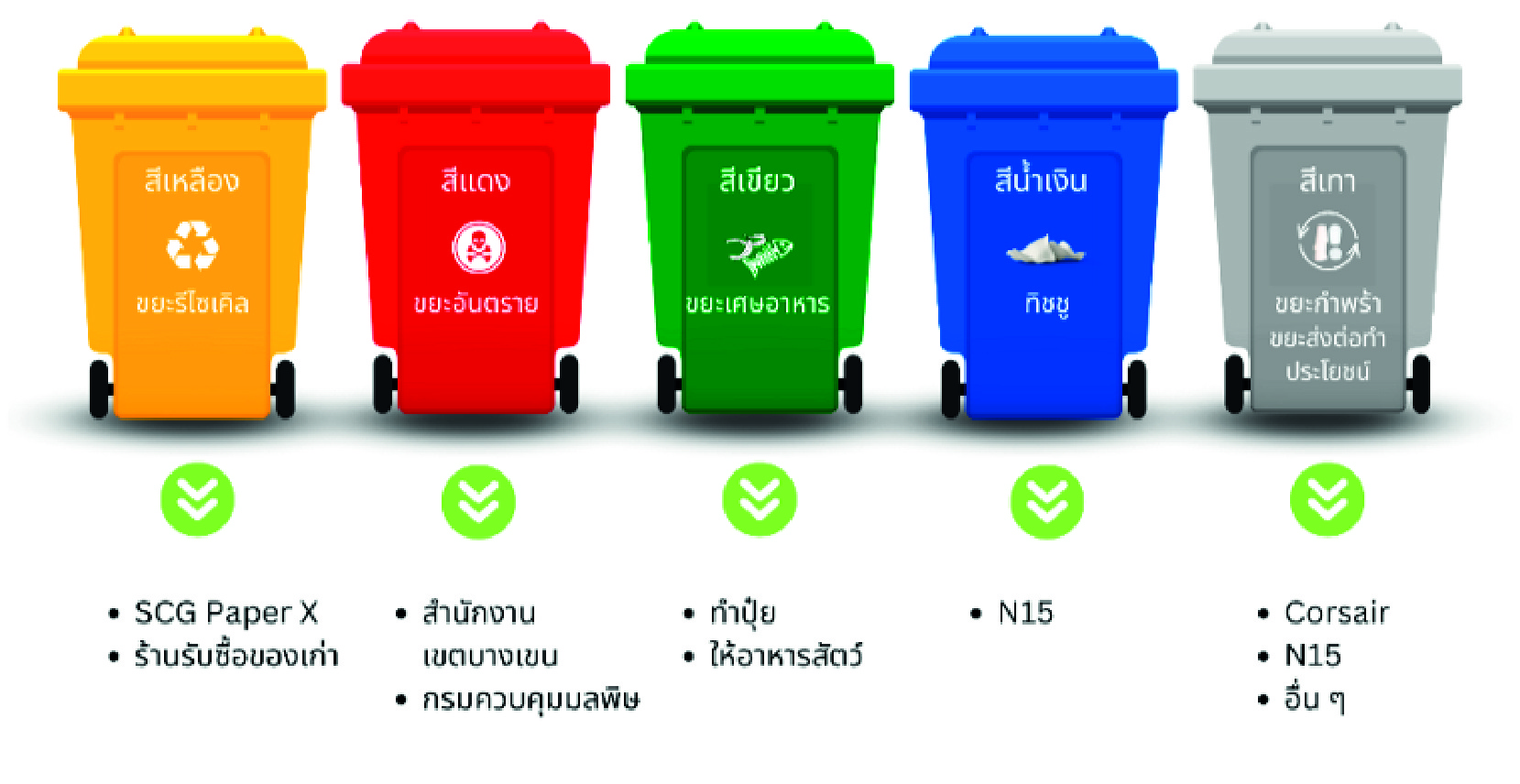
Waste Management Prototype Competition Project, 50 Districts, 2024 (Private Office Building Category)
The Company has implemented a general waste management process to be well managed, changing from waste to materials with the concept of Separate-Pour-Dry, which the recipients of waste can immediately manage and reduce waste from the source according to the 7R principle, allowing the Company to truly reduce general waste and extend the concept of Separate-Pour-Dry to our partners. This process earned the Company the 1st runner-up award for comprehensive waste management (office building category).
Hazardous waste
Hazardous waste is another type of waste that the Company pays attention to by joining the project of the Pollution Control Department as a member of “Cooperation between the Government and the Private Sector in Collecting Hazardous Waste from Communities” with the objective to make people aware of the serious dangers of this type of waste so that people properly separate the waste without disposing them together with other types of waste. The Company set up 4 locations to receive hazardous waste (light bulbs, flashlights, aerosol cans, mobile phones, and peripherals): the head office, the Mingle Mall shopping center., Atmoz Flow sales office in Minburi and Atmoz Season sales office in Lat Prabang.
In 2024, the Company encouraged employees to separate hazardous waste through the campaign “Hazardous Waste for Donuts or ESG Coins” by joining the activity via Line OA: aswGrowGreen. You can exchange it for donuts to eat or coins to spend in shops around the head office or exchange for other souvenirs from the Company's hazardous waste activities. Under this campaign, 47.46 kilograms of waste was collected, an increase of 58.2% from 2023.
Refill Station
Refill station is an activity held continuously every quarter at the head office to promote the reduction of single-use packaging with the intention to encourage employees to change their behavior by bringing bottles to fill with various liquids used in daily life, including dishwashing liquid, fabric softener, laundry detergent, and hand washing liquid.
For 2024, the total amount of liquid used for activities stood at 26,000 milliliters, equivalent to the reduction of 52 plastic bottles of 500ml size.
Collaboration with partners, agencies or stakeholders in waste, waste and pollution management
The Company organized a meeting with construction contractors to jointly determine the direction of the use of low carbon products in line with the country's policy towards net zero and the GrowGreen concept. The Company undertakes environmental management across value chain, from design, material selection, construction, to residents' living conditions, The meeting was attended by 8 main contractors: Well Graded Engineering Public Company Limited, Visavapat Company Limited, T. Peeragrich Company Limited, 3 Phon Company Limited, 7 Makara Company Limited, Jeerathana Korsrang Company Limited, Porn Phanakorn Company Limited, and Construction Lines Company Limited.
ASW x Arch KU Project
ASW x Arch KU Project is a collaboration between AssetWise and the Faculty of Architecture, Kasetsart University, providing real-world learning opportunities to enhance the potential of architecture students to meet the demands of the modern market. Throughout the 4-month project, students practiced their design skills through various activities, including special lectures, visits to the actual site at the WisePark Minburi project, and design work under the guidance of experts, leading to the creation of outstanding competition works that meet the needs of modern residents in line with AssetWise's Wisecology and GrowGreen concepts.
In addition, teams of students competed in building designs based on lifestyle-friendly living concept and a competition to design waste management areas in residential units in AssetWise's style under the concept of 'Separate-Pour-Dry' to aim for zero waste to landfill, allowing students to apply their knowledge to create works, as well as the Company to apply the concepts designed by the students to future projects.
Garbage and Waste Management
| Garbage and Waste Management | Unit | 2022 | 2023 | 2024 |
|---|---|---|---|---|
| Non hazardous waste | Kilogram | 1,318.00 | 1,182.00 | 145.28 |
| Hazardous waste | Kilogram | 28.00 | 30.00 | 47.46 |
| Total garbage and waste | Kilogram | 1,346.00 | 1,212.00 | 192.74 |
| Total Recycled waste | Kilogram | 1,577.82 | 2,748.23 | 9,415.76 |
| Recycled non hazardous waste | Kilogram | 1,577.82 | 2,748.23 | 9,415.76 |
| Recycled hazardous waste | Kilogram | 0 | 0 | 0 |
| Non-recycled waste | Kilogram | 1,318.00 | 1,182.00 | 145.28 |
The impact on the company from the management of garbage, Waste and Pollution
| Impact | Unit | 2022 | 2023 | 2024 |
|---|---|---|---|---|
| Financial quantification of pollution, waste and garbage | Bath | 0 | 0 | 0 |
Greenhouse gas management

The Group is aware of the need to limit greenhouse gas emission in its operation – most of which come from employees' use of personal vehicles, headquarters’ air conditioning systems, and construction projects. It aims to operate strictly according to Environmental Impact Assessment (EIA) policies in every project and corporate activity.
| Targets on GHG emissions | Unit | Results |
|---|---|---|
| Net Zero Greenhouse Gas: GHG Emissions | TCo2e | 1,670 TCo2e |
| Greenhouse Gas: GHG Emissions from Scope 1, 2, and 3 (compared with 2020 as year) | TCo2e | Reduce 29.78% |
Greenhouse gas management within construction projects
Air pollution caused during construction typically comes from exhaust pipes of trucks that deliver soil or construction materials and of construction machines. The emitted gas causes air pollution to the surrounding areas. The gas emitted by construction machines are:
- Carbon Monoxide (CO)
- Hydrocarbon (HC)
- Nitrogen Dioxide (NO2)
- Sulfur Dioxide (SO2)
The amount of emitted gas must not exceed the limit by law and the project must put up measures to prevent and evaluate environmental impact from its construction activities
Measures to prevent and mitigate environmental impact
- Turn off engines while not in use
- Maintain vehicles that deliver soil or construction materials and other machines in good working condition
- Supervise construction work to ensure that dust indicators from construction work do not exceed the standard values.
Measures to evaluate environmental impact
- Monitor and measure air pollution caused by Carbon Monoxide (CO), Hydrocarbon (HC), Nitrogen Dioxide (NO2), Sulfur Dioxide (SO2) in the construction areas
- Assign representatives from the Company to meet with residents next to the project at least once a month throughout the construction period to inquire about the effects of construction and provide a channel for receiving complaints about construction impact as well as solving problems that arise in a timely manner.
- Ensure that construction site controllers manage contractors to operate according to Environmental Impact Assessment (EIA) policies
Greenhouse gas management within projects
Impacts on air quality from greenhouse gases are mostly caused by traffic in the project, especially the parking lots and driveways due to the vehicles’ exhaust pipes. The emissions from traffic include nitrogen dioxide (NO2), hydrocarbon compounds (HC), and carbon monoxide (CO). The project must provide preventive measures and alleviate the effects by arranging parking areas that are open-air with wind blowing through it all the time which allows proper ventilation. Signs prohibiting leaving the engine on while parking were put in the parking area in order to prevent the accumulation of pollutants from the exhaust pipes of cars. In addition, speed control for cars in the project is also in place including providing clear traffic signs in the project to ensure efficient mobility of cars in the project including entrance-exit areas of the project with the objective to reduce pollution caused by the concentration of cars in on the driveways and unnecessary movements. At the same time, green spaces are provided within the project by planting trees that can help absorb carbon monoxide (CO) in the area around the project to absorb pollution generated in the project.
Greenhouse gas management in headquarters
Carbon footprint evaluation (headquarters)
The Company is highly aware and seeks to relieve the global warming effect. For this reason, the Company collects its data from every activity that emits greenhouse gas both directly and indirectly to evaluate and calculate its carbon equivalent at the headquarters. This evaluation leads to effective measures to reduce greenhouse gas emission.
The scopes used in evaluating greenhouse gas emission are as follows:
-
Scope 1:
Direct greenhouse gas emission, in which the sources belong to or are managed by the organization
-
Scope 2:
Indirect greenhouse gas emission relating to electricity generation
-
Scope 3:
Other indirect greenhouse gas emission
In 2024, the company's total greenhouse gas emissions were 1,670 tons of carbon dioxide equivalent. which is a direct greenhouse gas emission (scope 1) of 253 tons of carbon dioxide equivalent Indirect GHG Emission (Scope 2) 318 tons of carbon dioxide equivalent and other indirect greenhouse gas emissions (scope 3) 1,099 tons of carbon dioxide equivalent.
Total greenhouse gas emissions
1,670
tons of carbon dioxide equivalent
Greenhouse gas emissions
| GHG emissions | Unit | 2022 | 2023 | 2024 |
|---|---|---|---|---|
| Direct GHG emissions (scope 1) | TCo2e | 204.00 | 226.00 | 253.00 |
| Indirect GHG Emission (Scope 2) | TCo2e | 248.00 | 313.00 | 318.00 |
| Other indirect GHG Emission (scope 3) | TCo2e | 658.00 | 869.00 | 1,099.00 |
| Total GHG emissions | TCo2e | 1,100.00 | 1,408.00 | 1,670.00 |
The Company has measures to reduce greenhouse gas emissions in accordance with the GrowGreen policy in 5 areas, such as launching a campaign to save water by turning on only when necessary, watering with a rope system, drinking water from a water filter to reduce plastic bottle waste, separating all types of waste using the concept of Separate-Pour-Dry and sending them for further use, adjusting the air conditioner to 25 degrees Celsius, turning off the lights for 1 hour during lunch break, and turning off the lights every time there is no one in the room, including some common areas in the head office using solar power, and installing EV stations, promoting carpooling for same routes.
Regarding building design, trees were also planted to cover the buildings and large trees were planted around the buildings while the buildings were designed to have façades to prevent heat from entering the buildings. There are also openings for ventilation that reduce the work of air conditioners.
LESS (Low Emission Support Scheme)
In 2024, the Company applied to be certified and received a certificate of honor from Thailand Greenhouse Gas Management Organization (Public Organization) from waste separation activities for recycling while the Company managed collect the amount of greenhouse gas emissions at the head office which helped reduce the carbon footprint emissions by 11.454 tCo2e, equivalent to planting 1,273 trees.
The company has continuously been a member of the environmental program of the Stock Exchange of Thailand, including all three Climate Care Collaboration Platforms
Care the Bear
In 2024, there were 13 activities and 1 project recorded through the Care the Bear project, both online and offline; for example, blood donation activity, tree planting activity under “Plant for the Planet” to reduce temperatures, the 2024 Annual General Meeting of Shareholders, and Sharing Love Project through Braille #Year 3, etc. These activities helped reduce carbon footprint emissions by 2,093.01 kgCo2e, equivalent to planting 233 trees
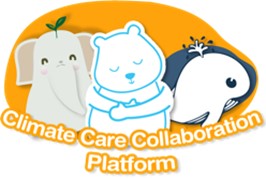
Care the Whale
The Company joined “Care the Whale” project with the aligned concept of “invisible waste” - eliminating the waste and find the ways to maximize the usage. This is in line with the Company's concept of waste management under “GrowGreen Policy” that manages waste right from the origins and gets rid of waste the right way with a common goal of Zero Waste to Landfill. The Company uses the Care the Whale platform to record the amount of various types of waste

Care the Wild
The Company has supported the Plant & Protect activity in the Ban Lang Khao community forest area, Bo Ploi District, Kanchanaburi, by planting 4,000 trees, covering a total area of 20 rais, which can absorb up to 36,000 kgCO2e of carbon per year.

Environmentally friendly procurement (Green Procurement)
The Company supports eco-friendly products and materials. It aims to purchase certified eco-friendly products for its construction and headquarters operation to help reduce greenhouse gas emission.
The Company plans to continue increasing purchasing value for eco-friendly products and materials with the following plan.
- Increase the amount of eco-friendly business partners, products, and services while continuously updating our green procurement database
- Partner with businesses that are aware and consider eco-friendly materials and services such as businesses using energy-saving electrical appliances, recyclable or renewable materials, etc.
- Communicate with business and trading partners that the Company will be procuring and purchasing eco-friendly products and services
In 2024, the Group put in place a process to purchase environmentally friendly construction materials by selecting suppliers who sell products and/or provide certified environmentally-friendly services and/or with certified labels for environmentally-friendly products. The Company has a number of suppliers that sell products and/or provide environmentally friendly services, totaling 18 companies, with a list of products and/or environmentally friendly services with a total of 23 items.
Expanding green spaces
Plant for the Planet Project
CO2 emission is common in many business operations. As a responsible initiative for the environment and organisms living in it, AssetWise company and its partners have planted trees to help absorb CO2 under the project “Plant for the Planet”. The project aims to raise awareness to reduce CO2 emission in the future, both in business and personal activities, by inviting participants to plant 433 trees/person* to offset the CO2 an individual emits during everyday activities and prevent the global temperature from rising more than 1.5C degrees.
In 2024, the Company has increased green areas under the Plant for the Planet project in Bangkok and other provinces by planting carefully so that 100% of the trees survive, covering a total of 2,900 trees in 3 areas, which is equivalent to the absorption of up to 26,100 kgCO2e of carbon.
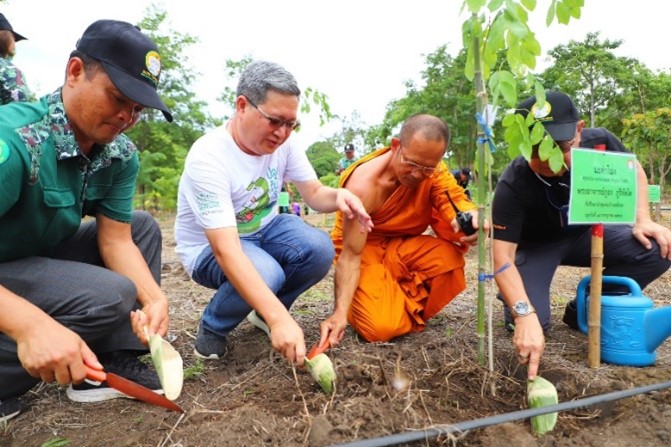
Planting Seedlings...Save the World Project
The Company has collaborated with the Prawet District Office, Bangkok, the Reforestation Promotion Office, the Royal Forest Department, and 5 schools in Prawet District: Surao Charakhe Khop School (Kulangkur Uppatham), Khlong Makhamthet School, Mathayom Suwit Seree Anusorn School, Suwit Seree Anusorn School, and Kaenthong Upatham School, by starting the Planting Seedlings...Save the World project since the end of 2023.
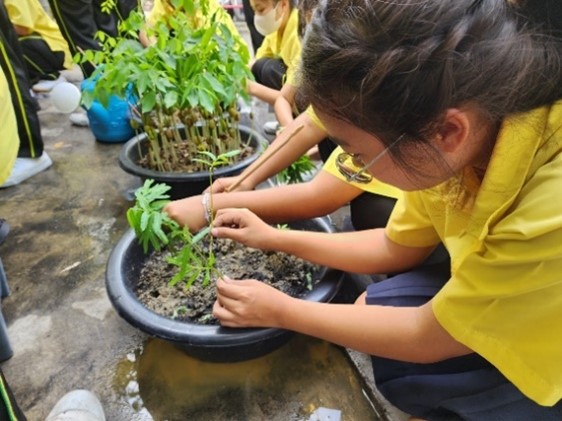
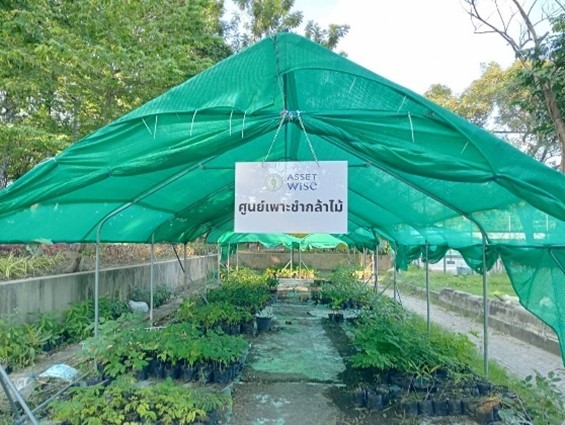
Innovation in recording environmental information
AssetWise is committed to supporting solutions for reducing environmental impacts for everyone. Therefore, an Official Line called ASWGrowGreen was developed and launched as a tool for creating experiences and recording environmental information with preliminary calculation of carbon dioxide emission reduction included. Currently, the tool focuses on increasing green spaces/planting trees as well as waste management.
Plant for the Planet: is a function to record information related tree planting, starting from planting seeds, taking care of seedlings to planting trees and tracking trees growth while details in each step can be recorded.
Zero Landfill : is a function to record information related to waste management with a classification of waste into recyclable materials, materials sent for further use (unrecyclable waste), hazardous materials, and food scraps.
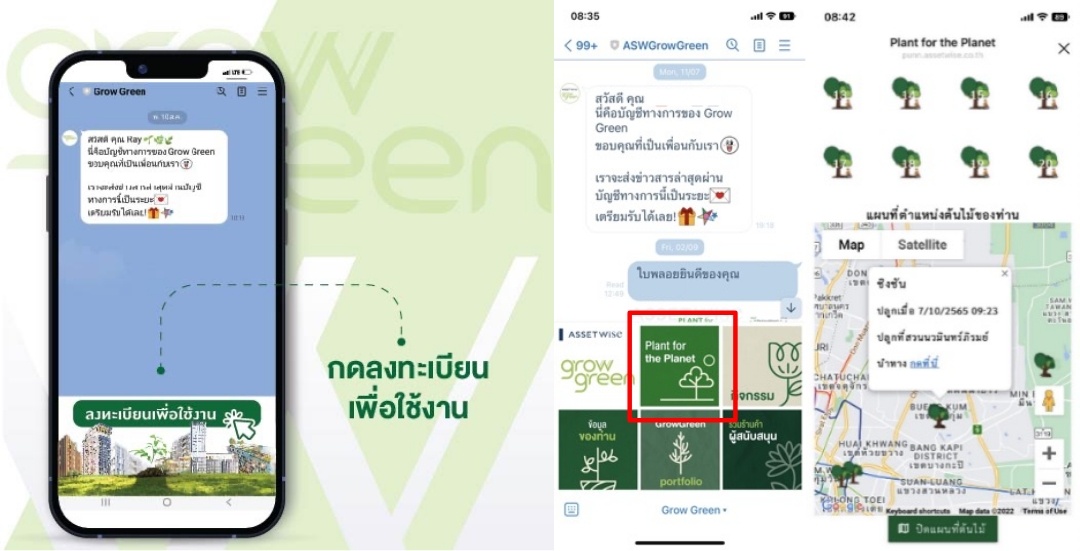
Biodiversity Management

Biodiversity Management
The Company has set targets for its commitment to not cause any loss of biodiversity within manageable limits and undertake comprehensive biodiversity operations throughout the Company's value chain.
| Target | Unit | Results |
|---|---|---|
| The new project in this year is located in a natural conservation area | Project | 0 |
Policy or commitment on biodiversity
The company prioritizes biodiversity issues by conducting comprehensive biodiversity studies as part of thorough environmental impact assessments and regular monitoring. It commits to actively protecting, conserving, restoring, and mitigating any potential negative impacts on biodiversity, including taking proactive steps to avoid actions that could harm biodiversity. The overarching goal is to maintain biodiversity in the operational areas and surrounding communities.
The company is committed to preventing any loss of biodiversity within manageable limits. Therefore, it has set goals for its commitment and practices in biodiversity management, with the following details:
- Commit to comprehensively managing, restoring, and addressing biodiversity and ecosystem issues across all operational areas of the company.
- Implement targeted strategies to reduce, mitigate, and avoid any adverse impacts on biodiversity.
- Conduct detailed biodiversity risk assessments within company operations to strictly control and manage high-risk areas or activities that could significantly impact biodiversity.
- Regularly monitor biodiversity within company operational areas by conducting thorough environmental impact studies and producing detailed biodiversity evaluation reports.
- Conduct business responsibly, explicitly avoiding operations within protected natural conservation areas and locations impacting endangered or locally specific species.
- Proactively engage in positive biodiversity conservation initiatives.
- Collaborate with communities and key stakeholders by building partnerships, consulting, and encouraging participation in biodiversity management activities.
- Partner with regulatory agencies, government organizations, private sector entities, and international organizations to conserve, restore, and reduce biodiversity loss.
Biodiversity Risk
The Company's operations, especially in the development of real estate projects in various areas, may have an impact on the biodiversity and ecosystems of the project sites and surrounding areas. Therefore, the Company has taken measures to mitigate the risk of such impacts, starting from the establishment of a clear biodiversity management policy and comprehensive management of biodiversity impacts in each project.
The development of the Company's projects, both new projects in 2024 and projects in progress, starts from the selection of land for project development. The Company strictly complies with the city planning laws of each area without encroaching or developing areas that are not in accordance with the city planning laws. In addition, the Company has conducted an environmental impact assessment to ensure that none of the Company's projects encroach on or are near natural areas. The environmental impact assessment found that there are no biological resources and rare animals that are economically important and need to be conserved in the project areas or areas near the projects. In addition, such assessment helps prevent the risk of impacts on biodiversity in project development, which is in accordance with the legal measures of the Ministry of Natural Resources and Environment, which require the Company to have strict and comprehensive measures to prevent and mitigate environmental impacts in all aspects.
The Company also focuses on developing projects by taking into account the creation of green spaces within the projects, both in common areas and in designing residential areas that utilize the shades of trees, selecting tree species that are suitable for the conditions of each project area, as well as preserving existing trees in the project areas. In every project of the Company, there are more green spaces than what is required by the law.

Biodiversity Action in the Project Areas
The Company places importance on biodiversity and has formulated a tangible sustainability policy. The Arbor Ramintra-Watcharapol project has conserved trees in the original area, namely 3 rain trees which helped maintain the original species of local trees by transplanting them carefully to the master plan. They were moved to the front of the project to be a landmark at the entrance to the project and the other 2 trees were moved to the Park 2 area. This is considered a conservation of trees to maintain biodiversity.

